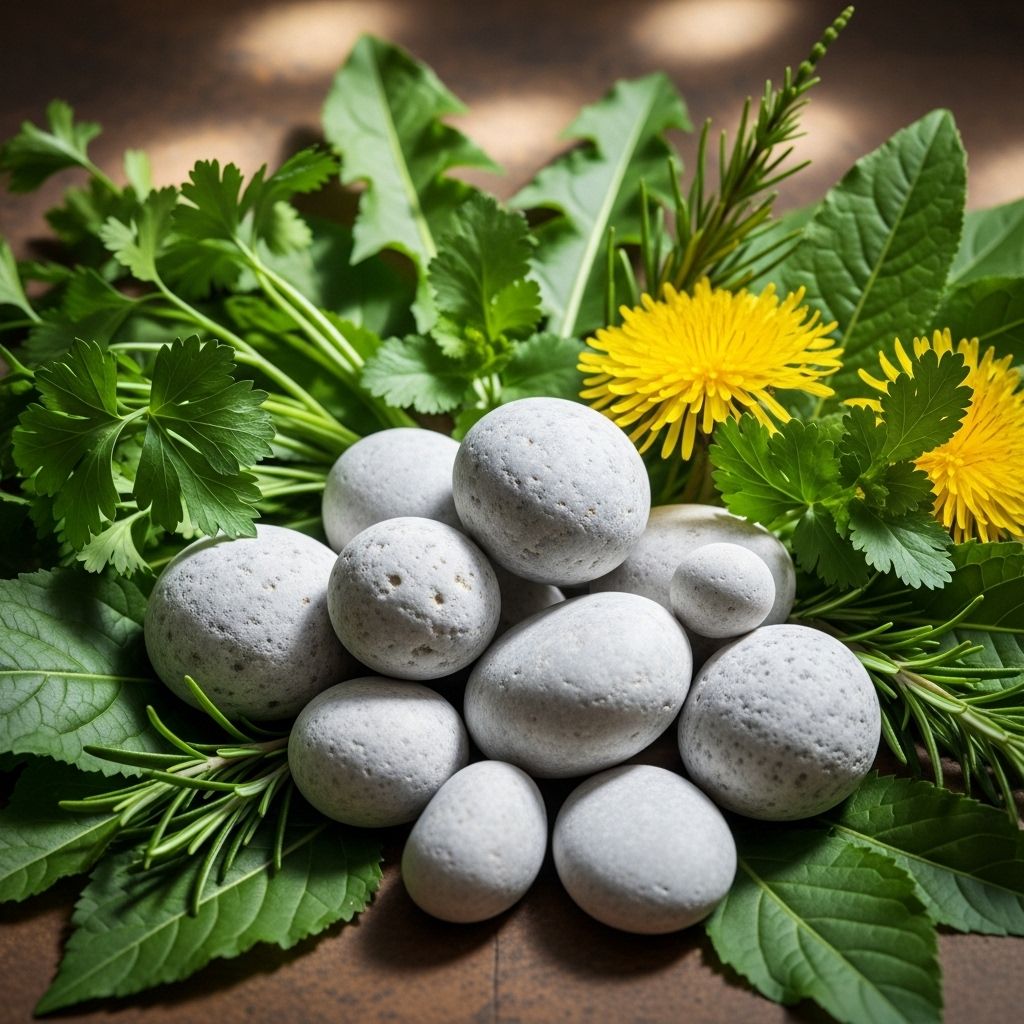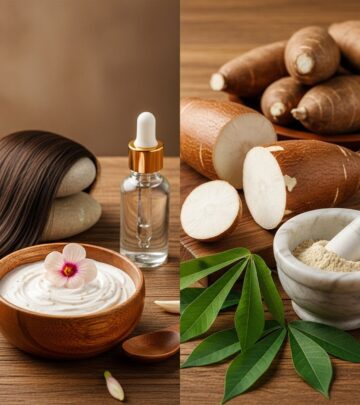Natural Remedies for Calcium Deposits: Causes, Symptoms, and Holistic Solutions
Discover the top natural cures and remedies for calcium deposits, understand their causes, and learn holistic prevention strategies.

Introduction: Understanding Calcium Deposits
Calcium deposits, medically known as calcification, occur when calcium builds up in body tissues where it shouldn’t be, often in the skin, joints, tendons, or arteries. While essential for healthy bones and teeth, calcium can sometimes accumulate in soft tissues, leading to discomfort, pain, and even reduced mobility. Many people seek natural remedies to manage, reduce, or prevent these deposits, especially when conventional treatments don’t offer complete relief or when they wish to pursue gentle, holistic approaches.
This comprehensive guide covers the most common causes of calcium deposits, their symptoms, how they’re diagnosed, and—most importantly—a variety of natural cures and home remedies that may help alleviate or prevent this condition.
Causes of Calcium Deposits
Calcium deposits can develop for several reasons, often involving abnormal metabolism, chronic inflammation, or localized tissue injury. Here are the most common causes:
- Trauma: Injury to tissues can trigger abnormal calcium accumulation as part of the healing process.
- Chronic Inflammation: Conditions like arthritis, tendinitis, or bursitis can cause ongoing inflammation, leading to calcium deposition.
- Metabolic Disorders: Abnormal levels of calcium, phosphorus, or vitamin D in the blood can encourage deposits.
- Endocrine Disorders: Imbalances in hormones—such as in hyperparathyroidism—sometimes contribute.
- Aging: As people get older, their tissues become more prone to abnormal calcification.
- Diet and Lifestyle: High calcium intake, dehydration, or excessive vitamin D supplementation may play a role.
Symptoms of Calcium Deposits
The signs of calcium deposits depend on their location. Here are common symptoms:
- In Joints or Tendons: Pain, stiffness, swelling, and reduced range of motion. For example, calcium deposits in the shoulder can lead to “frozen shoulder” or severe, sometimes disabling pain, especially in the morning.
- Under the Skin: Visible or palpable hard lumps, sometimes tender to the touch.
- In Arteries: Often no symptoms until advanced, but may contribute to cardiovascular disease.
If calcium deposits become large or interfere with normal function, medical attention should be sought to prevent long-term damage.
Diagnosis
Diagnosis typically involves:
- Medical History: Discussing symptoms, diet, and lifestyle with your healthcare provider.
- Physical Exam: Especially for visible or palpable deposits in the skin or joints.
- Imaging: X-rays, ultrasounds, or CT scans can reveal the size and location of deposits.
- Blood Tests: To check calcium, phosphorus, and hormone levels.
Conventional Treatment Options
When calcium deposits cause pain or impair function, conventional treatments may include:
- Pain relievers and anti-inflammatory medications.
- Corticosteroid injections to reduce inflammation in affected joints or tendons.
- Physical therapy and range-of-motion exercises to maintain mobility.
- Shock wave therapy, therapeutic ultrasound, or needling procedures to break up deposits.
- In rare cases, surgical removal of large or persistent deposits.
Natural Remedies for Calcium Deposits
Many people seek natural alternatives to manage calcium deposits, either alongside or instead of conventional treatments. While these remedies are not universally endorsed by medical professionals, some have anecdotal support and may be worth trying in consultation with your healthcare provider.
Diet and Nutrition
Dietary adjustments can help prevent or reduce calcium deposits:
- Reduce Calcium Intake: Some natural healing advocates suggest limiting dairy and high-calcium foods, though excessive restriction is not advised without medical supervision.
- Magnesium-Rich Foods: Magnesium helps regulate calcium metabolism. Increase intake of leafy greens, nuts, seeds, and whole grains.
- Potassium and Vitamin K: These nutrients help prevent calcium from depositing in soft tissues. Avocados, bananas, and green vegetables are excellent sources.
- Polyphenol-Rich Foods: Quercetin (from apples, onions), curcumin (turmeric), and resveratrol (grapes, berries) may help inhibit abnormal calcification, especially when combined with magnesium.
Hydration
Dehydration can increase the risk of calcium deposits by concentrating minerals in the blood. Drinking adequate water helps flush excess calcium and supports kidney function.
Herbal Remedies
- Apple Cider Vinegar: Anecdotal reports suggest drinking diluted apple cider vinegar daily may help dissolve deposits, but evidence is limited.
- Chanca Piedra: This herb, traditionally used for kidney stones, is sometimes claimed to break down calcium deposits, though clinical data is lacking.
- Turmeric and Ginger: These anti-inflammatory spices may help reduce tissue inflammation that contributes to calcification.
Topical Applications
- Aloe Vera Gel: Massaging the affected area with aloe vera gel may help some people, though scientific support is limited.
- Olive Oil: Warm compresses or massages with olive oil are sometimes used to soften deposits and improve local circulation.
Lifestyle and Home Care
- Exercise: Regular physical activity supports healthy circulation and reduces stiffness, especially in joints where deposits may form.
- Posture and Body Mechanics: Proper alignment and ergonomic practices can reduce stress on joints and tissues.
- Rest: Resting affected joints when pain is acute can help prevent further irritation.
- Stress Reduction: Chronic stress may contribute to inflammation and poor healing, so relaxation techniques are beneficial.
Prevention Strategies
Preventing calcium deposits involves maintaining balanced metabolism and healthy tissues:
- Balanced Diet: Eat a diet rich in fruits, vegetables, whole grains, and lean proteins. Limit processed foods, excess salt, and sugars.
- Vitamin and Mineral Supplements: If deficiencies exist, supplements of magnesium, vitamin D, and vitamin K may be helpful, but always consult a healthcare provider first.
- Hydration: Drink plenty of water to support kidney function and prevent mineral buildup.
- Regular Check-ups: Especially if you have a history of metabolic or endocrine disorders.
Table: Natural Sources of Key Nutrients for Calcium Deposit Prevention
| Nutrient | Food Sources | Potential Benefit |
|---|---|---|
| Magnesium | Leafy greens, nuts, seeds, whole grains | Regulates calcium metabolism, may prevent soft tissue calcification |
| Vitamin K | Kale, spinach, broccoli, green vegetables | Helps direct calcium to bones, not soft tissues |
| Potassium | Avocados, bananas, potatoes, beans | Supports healthy mineral balance, may reduce arterial calcification |
| Polyphenols (Quercetin, Curcumin, Resveratrol) | Apples, onions, turmeric, grapes | Anti-inflammatory, may inhibit abnormal calcification |
Frequently Asked Questions (FAQs)
Q: Can calcium deposits go away on their own?
A: In some cases, particularly in tendons, calcium deposits may dissolve or be reabsorbed by the body over time, especially with rest and gentle mobilization. However, persistent or symptomatic deposits may require medical intervention.
Q: Are calcium deposits dangerous?
A: Most calcium deposits in soft tissues are benign and cause only mild symptoms. However, deposits in arteries can contribute to cardiovascular disease and should be monitored by a healthcare professional.
Q: Can dietary changes really help with calcium deposits?
A: Some evidence suggests that a diet rich in magnesium, potassium, and vitamin K, while balanced in calcium, may help prevent or reduce abnormal calcification. However, drastic dietary changes should not be made without medical supervision.
Q: Are there any proven herbal remedies for calcium deposits?
A: Most herbal remedies, such as chanca piedra or apple cider vinegar, lack robust clinical evidence. They may be safe for some people to try, but results are anecdotal and not guaranteed.
Q: When should I see a doctor for calcium deposits?
A: Seek medical attention if you experience severe pain, reduced mobility, persistent lumps, or if you have a history of metabolic or endocrine disorders. Early intervention can prevent complications.
Conclusion
Calcium deposits, though often harmless, can cause pain and reduced function in joints, tendons, or other soft tissues. While conventional treatments like medications, therapy, and even surgery are available, many individuals turn to natural remedies—such as dietary changes, hydration, herbal supplements, and lifestyle modifications—for relief and prevention. Most of these approaches focus on supporting balanced mineral metabolism and reducing inflammation. While scientific evidence for some natural remedies is limited, a holistic, balanced approach to diet and lifestyle remains a sensible foundation for overall health and may help manage the risk and symptoms of calcium deposits.
Always consult with your healthcare provider before making significant changes to your diet, supplementation, or treatment plan, especially if you have underlying health conditions.
Read full bio of Sneha Tete











